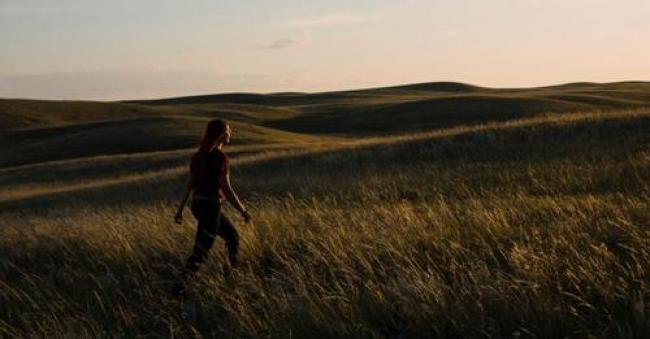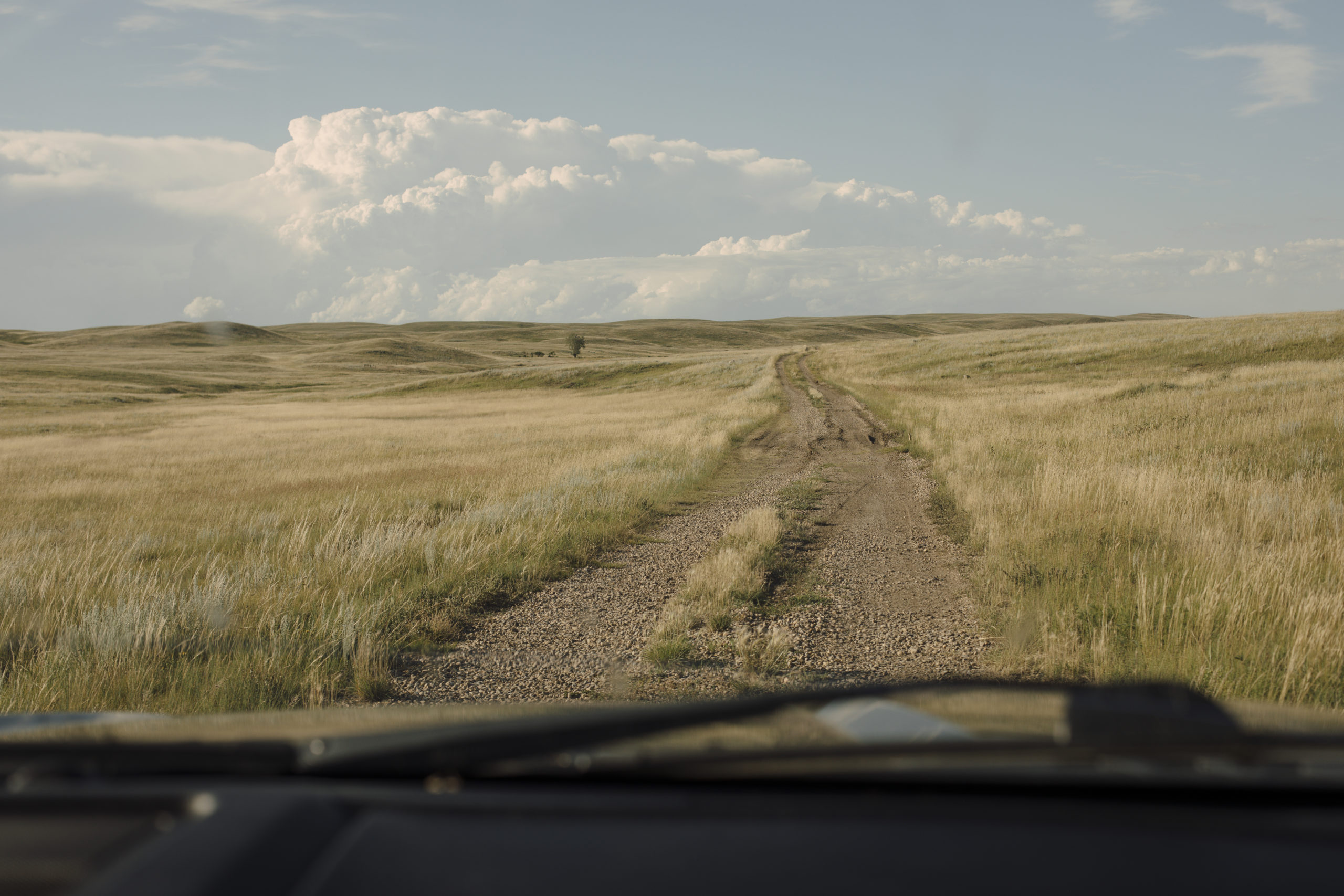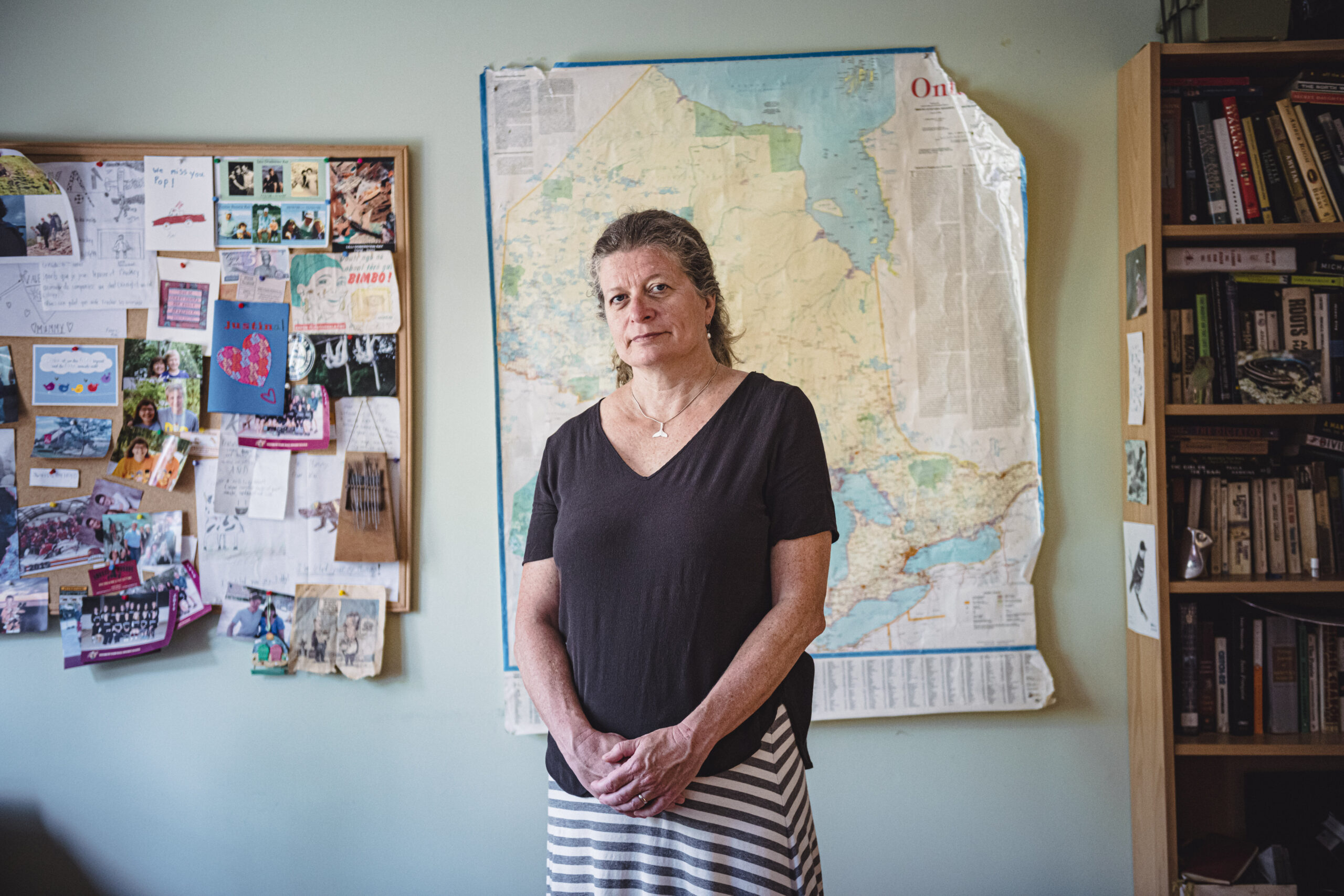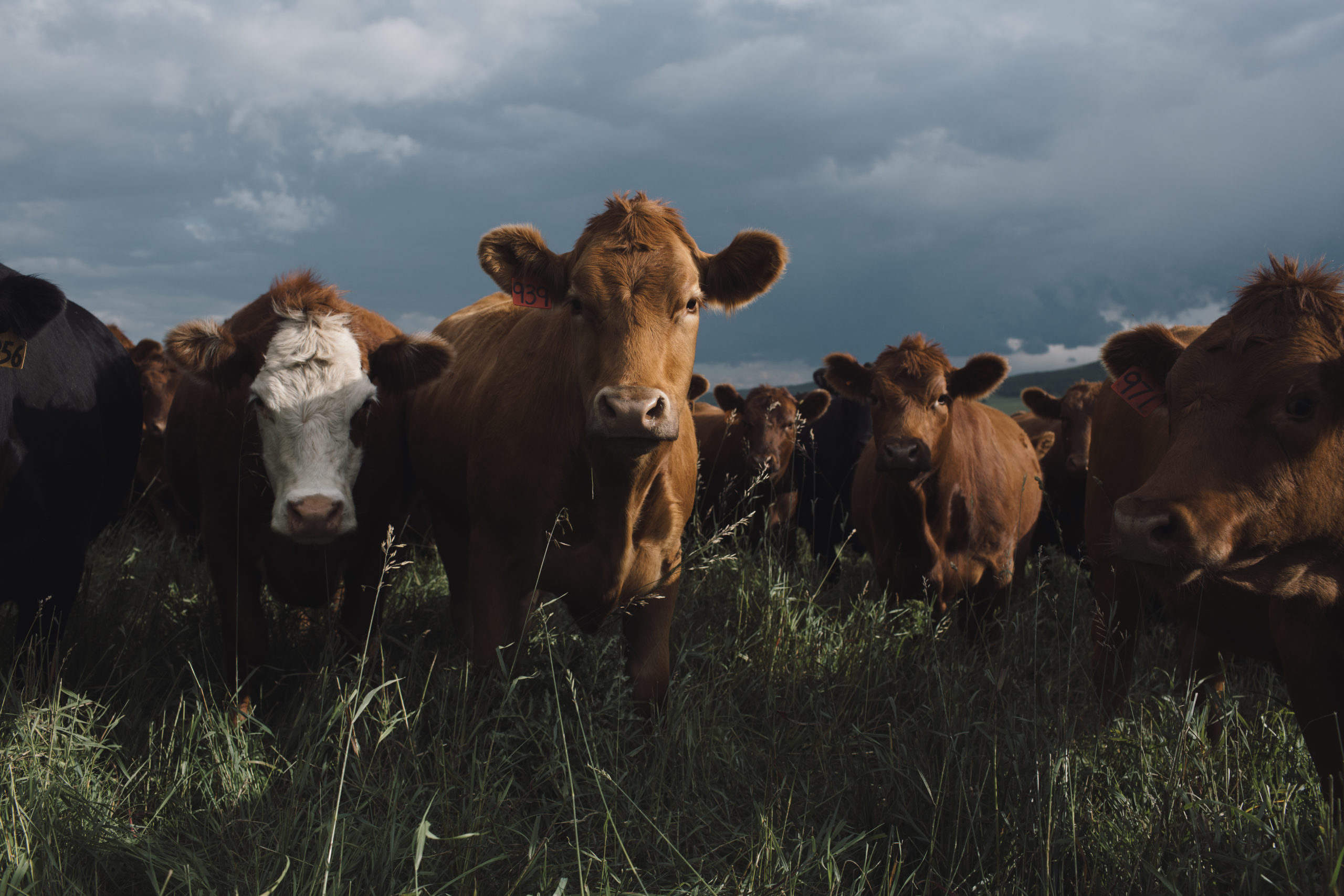Articles Menu

Nature-based climate solutions are having a moment this federal election, with the Liberal, Conservative and Green platforms all committing to invest in protecting and restoring natural ecosystems as a way to reduce pollution. The NDP also committed to investing in nature-based climate solutions in writing, though not in its platform.
The fact that major federal parties are focusing on natural processes to sequester carbon is a significant win for conservation and implies people are gaining a broader understanding of nature-based climate solutions, according to Hadley Archer, executive director of Nature United.
“Nature itself is a huge ally in tackling climate change,” he said.
The parties vary in the details of their commitments to nature-based climate solutions, but “at least we’re not debating this election whether climate change is real,” Archer said.
“We’d like to see all parties at the federal level and all provinces and territories articulate natural climate solutions as part of their climate plan,” he said.
Natural climate solutions utilize natural landscapes and processes that organically sequester carbon to mitigate carbon emissions. Landscapes can act as reservoirs for billions of tonnes of carbon: forests store carbon in tree trunks, grasslands store carbon in grass roots that extend deep underground and peatlands store carbon in organic matter. Canada is home to a quarter of the world’s peatlands.
Nature United released a peer-reviewed study earlier this year showing nature-based climate solutions could reduce Canada’s annual emissions by up to 78 megatonnes in 2030. This reduction is equivalent to cancelling out the emissions from every powered home across Canada for three years.
According to the most recent data released by the federal government in 2021, Canada’s total annual emissions in 2019 were equivalent to 730 megatonnes of carbon dioxide.
Finding natural ways to sequester carbon is timely as the International Panel on Climate Change report in August stated humans are unequivocally responsible for climate change, and even if nations take action now, many of the impacts of climate change are irreversible. Canada is warming at twice the rate of the rest of the world, on average. But Archer says there is hope in supporting natural processes.
A study published in the Proceedings of the National Academy of Sciences in 2017 found nature-based climate solutions could provide more than one-third of the emissions reductions needed to stabilize global temperature increases below 2 C by 2030 and help deliver on commitments made under the Paris Agreement.
Investing in nature-based climate solutions brings co-benefits like protecting biodiversity, providing buffers to extreme weather events and creating green jobs, Archer added. It’s also popular: in a 2018 survey representative of the census, most Canadians felt 50 per cent of land and sea should be protected in Canada and globally.
Rebecca Sinclair, research and policy analyst for Indigenous Climate Action, emphasized it’s important to remain skeptical about natural climate solutions. Sinclair, who is from Barren Lands First Nation and a member of Little Saskatchewan First Nation, said Indigenous Peoples have been systemically excluded from government climate policy discussions and she’s concerned nature-based solutions could be done the same way.
She co-authored an analysis of how climate policy and planning in Canada includes Indigenous rights, and said her search showed climate policy often includes “nice, strategic words” about working with Indigenous Peoples, but rarely resulted in action.
Nature-based solutions have potential to replicate how “conservation has been historically used to take away land from Indigenous folks … [and] has made them stakeholders opposed to rights-holders,” Sinclair said in an interview.
“Indigenous folks want to be able to utilize the land for culture, language revitalization and hunting grounds, to name a few,” she said. “Nature-based climate solutions have great opportunity for meaningful change by including Indigenous people as rights-holders.”
Each of the federal parties have different priorities regarding environmental issues and how they will work with Indigenous Peoples, but nature-based climate solutions have become a common talking point in the parties’ climate plans. So how have each of the parties committed to protecting, restoring and managing carbon-rich landscapes?
“Setting ambitious targets is very important and investing to make sure that they can be delivered is critical,” Alison Woodley, senior strategic advisor for the Canadian Parks and Wilderness Society, told The Narwhal.
“We can’t expect long-term returns without long-term investment.”
Woodley said federal funding can help get reluctant provinces on board. She emphasized that a nature-based climate solution is not just about how much land is protected or how many dollars are committed — it’s about the implementation, assuring the most important biodiverse areas are protected and Indigenous nations and local communities are full partners.
The Liberals have delivered historic investments to protect nature and the Conservatives promise to invest $3 billion between now and 2030 in nature-based climate solutions.
Archer said it’s still “not enough, but it’s a good amount to get started.”
The Nature United study estimated that it would cost $10 billion to get halfway to the target of reducing emissions by 78 megatonnes by 2030 through nature-based climate solutions.

Justina Ray, president and senior scientist at Wildlife Conservation Society Canada, said a lack of investment in nature comes down to the fact that “we just don’t value our natural assets sufficiently.”
She gave freshwater as an example. A single barrel of oil from the oilsands may require three to four barrels of fresh water to produce. But that’s considered “free,” Ray said, adding that there is some nuance because water is regulated, but its contamination or use often isn’t adequately taken into account when considering the costs of industry. Agriculture is also subsidized without accounting for the costs of soil degradation and biodiversity loss, she said.
“Gross domestic product doesn’t include the degradation of those assets,” she said. “You can grow and grow at the expense of these assets, and you’ve got this false metric.”
Conservatives: The Conservatives are the only party besides the Liberals to commit a dollar-value to nature-based climate solutions in their platform. Their promise to invest $3 billion between now and 2030 would focus on managing forest, crop and grazing lands and restoring grasslands, wetlands and forests. The party says it will explore incentives for landowners to preserve and enhance natural climate solutions on their land.
The Conservatives also promise to develop a natural infrastructure plan that includes a national standard to assess the value of natural infrastructure.
Liberals: The Liberal Party’s platform commits to establishing a $50 million B.C. Old-Growth Nature Fund. They reaffirm their 2019 election campaign commitment to plant 2 billion trees, but tree planting only began in April of this year, Natural Resources Canada told The Narwhal in a statement. The statement said 30 million trees will be planted between spring and fall this year, and the exact numbers “will be available in the coming months.” The new platform also includes renewed promises to restore and enhance wetlands, grasslands and peatlands to store carbon. They promise new investments in tidal wetlands and riparian areas that store carbon.
The Liberal government made two historic investments, one of $1.3 billion to conservation in 2018 and another in the 2021 budget, committing nearly $3.3 billion to protecting oceans, lands and freshwater. Within that funding, the Liberal government invested $340 million in Indigenous guardians and Indigenous Protected Areas.
NDP: The NDP platform promises investment in habitat restoration, but includes no financial commitments. The platform doesn’t mention nature-based climate solutions, but a group of conservation organizations sent a questionnaire to the federal parties, and in the NDP’s response, it promised to “expand investments in nature-based climate solutions” and work with climate experts to develop nature-based solutions.
Greens: The Greens also don’t commit a specific dollar amount in their platform, but promise to scale up funding for nature-based solutions and invest in restoration and protection of marine carbon sinks “such as marine sediments, kelp forests, seagrasses and salt marshes.”
According to the Canadian Parks and Wilderness Society’s most recent report card on Canada’s progress protecting land and ocean, Canada has protected 13 per cent of terrestrial lands and 14 per cent of marine areas. Under the Harper government, Canada previously committed to protect 17 per cent of land by 2020, a target which it missed.
The country now has nine years to protect 17 per cent of its lands and oceans to meet the Liberals’ target of 30 per cent protection by 2030. This is also likely to become a global commitment in the near future, since the United Nations Convention on Biological Diversity is currently negotiating a new framework and drafts have included an international “30 by 30” goal.
According to Nature United’s report, protecting lands and waters makes up 38 per cent of the potential to lower Canada’s emissions by 78 megatonnes by 2030 through natural climate solutions.
“Protecting carbon-rich soils and forests is often the easiest and most obvious way to avoid emission reductions in the first place and ensure these ecosystems continue to store and sequester carbon,” Archer said.
Various studies estimate 30 per cent to 70 per cent of Earth’s land and waters need to be protected to halt biodiversity loss and restore natural ecosystems. Science shows the 30 per cent target is “the absolute minimum” and protecting half is more likely what’s needed, Woodley added.
“The world is moving to ambitious targets and it’s critical that Canada, which has been a champion at the global stage for this scaled up target, continue to be a leader in those discussions,” she said.
Since habitat degradation is the primary driver of biodiversity loss and contributes to the loss of carbon storage, “protecting and restoring nature has to be at the centre of the solution” to the biodiversity and climate crises, she explained.
Ray, from Wildlife Conservation Society Canada, said some people may wonder why it’s necessary to increase the goal from 17 per cent to 30 per cent. But she explained the reality is that even 30 per cent may not be enough.
“There’s been so much lost. In truth, everything that’s left is important,” she said.

Conservatives: The Conservatives did not commit to the 30 per cent protection goal by 2030. The party’s platform reiterates their support to protect 17 per cent of terrestrial land as the Harper government committed in 2010 under the United Nations Convention on Biological Diversity. They “will seek to increase” that goal to 25 per cent.
“We will remain mindful that there is a significant risk in expressing our ambition strictly in terms of how much area is protected,” the platform reads. “If we focus solely on area, we will tend to favour the creation of large parks in remote areas and risk making it harder to protect our most endangered ecosystems, which predominantly lie in the southern working landscape.”
Liberals: The Liberals reassert their commitment to protect 30 per cent of lands and oceans by 2030 and promise to support nature-based climate solutions like the conservation of wetlands, peatlands, croplands and grasslands that sequester carbon. They promise to establish at least one new national urban park in every province and territory, with the goal of establishing 15 of these parks by 2030.
NDP: The NDP platform commits to protecting 30 per cent of land, freshwater and oceans by 2030. It promises to expand marine protected areas, reduce threats to ocean ecosystems and implement a national freshwater strategy. It also promises to expand urban national parks but with no specifics.
Greens: The Greens have the most ambitious goal, promising to protect a minimum of 30 per cent of freshwaters and lands in each Canadian ecosystem by 2030 and extending that target to 50 per cent protection by 2050, prioritizing carbon-rich ecosystems. They promise to support marine nature-based climate solutions by protecting and restoring coastal and marine areas.
The Greens also promise to halt habitat destruction by 2030 and restore “the most negatively affected ecosystems such as wetlands by 2050,” also prioritizing carbon-rich areas.
Any climate solutions have to centre the “inherent protectors” of this land and value traditional knowledge as much or more than western science, Sinclair with Indigenous Climate Action said.
“We would benefit greatly if Indigenous knowledge was at the forefront,” she said. “We can come together, but Indigenous folks need to be in the driver’s seat.”
Hadley pointed to Clayoquot Sound on western Vancouver Island as an example, where Nature United is supporting local First Nations to create protected areas by buying out forestry tenures.
“Lands that were previously going to be logged will be formally protected,” he said.
The old-growth forests of Clayoquot Sound, home to the famous ‘war in the woods,’ could store 100 million tonnes of carbon.

The Thaidene Nëné Indigenous Protected Area, led by the Łutsël K’é Dene, stores 379 million tons of carbon. The Seal River Watershed, a proposed Indigenous Protected Area that is stewarded by Cree, Dene and Inuit neighbours, holds 1.7 billion tonnes of carbon within its boreal soils, wetlands and peatlands.
Each of the platforms acknowledged the importance of Indigenous leadership and supported Indigenous Protected Areas.
Conservatives: The party platform commits to working with Indigenous communities to expand Indigenous Protected and Conserved Areas managed by Indigenous Guardians.
Liberals: As previously mentioned, the Liberals invested $340 million in Indigenous Guardians and Indigenous Protected Areas in the 2021 budget. Their platform promises to support new Indigenous Guardians programs and help Indigenous communities build capacity to establish more Indigenous Protected and Conserved Areas.
NDP: The NDP promises to support Indigenous-led conservation and climate planning, as well as Indigenous Guardians programs.
“New Democrats will build reconciliation into the heart of our plan to address the climate crisis,” the platform reads. “Indigenous Peoples are best placed to protect cultural and biological diversity through control over their territory. We are committed to working with Indigenous governments, respecting Indigenous knowledge, and upholding Indigenous Rights to protect lands, waterways and biodiversity.”
NDP Leader Jagmeet Singh verbally committed $500 million to Indigenous-led conservation programs in August.
Greens: The Green platform promises to support and invest in Indigenous Protected and Conserved Areas and Indigenous Guardians programs. The party says it will work with Indigenous governments to develop a national framework for Indigenous Protected Areas.
It also commits to protect and restore coastal and marine areas and support marine nature-based
climate solutions while including Indigenous Peoples in decision-making.
According to the Nature United study, the biggest gains Canada can make through nature-based emissions reductions would come from improved management of lands, especially agricultural land. For example, no-till farming allows soil to retain its carbon, which otherwise releases up to half its stored carbon when disturbed. Cover crops are grown specifically to help fertilize and strengthen the soil.
“Cover crops, no-till farming and nutrient management are examples of supporting industry as they transition and adopt more climate-smart practices,” Archer from Nature United said.
He said there’s lots of work to be done to help farmers measure emissions reductions and qualify for carbon credits, and create other incentives to encourage more sustainable practices.
Conservatives: The Conservatives promise to encourage emissions-reducing practices in agriculture, such as low or no-till farming. The platform also says the party will “explore” the use of incentives to preserve and enhance natural infrastructure on private lands.
Liberals: The party platform commits to increasing support for farmers to create lower-emission practices that promote carbon storage, including cover cropping, rotational grazing and nitrogen management.
NDP: The New Democrats promise to work with farmers to “promote sustainable land-management techniques and methods to reduce GHG emissions.” The party also promises to work with partners to adapt to climate-induced weather changes.
Lastly, they promise to work with farmers to support biodiversity, in particular pollinator health.
Greens: The Greens say they will “act on the enormous potential of carbon sequestration in soil” by implementing incentives for sustainable practices that “do not disadvantage small farmers.” In addition, the party says it will work with provinces to help farmers protect wildlife areas, lakes and aquifers, and increase carbon sequestration and decrease water requirements.
Alongside climate change, the world is facing a biodiversity crisis, with almost one million species at risk of extinction globally, and Canada is no exception. The list of wildlife species at risk in Canada has over 800 entries.
“Natural climate solutions can help address both climate change and biodiversity loss,” Archer said. “Through a biodiversity lens, it’s equally compelling to move as quickly as we can.”
“The climate crisis and biodiversity crisis are completely intertwined,” Ray added. “Biodiversity has never gotten that much attention [but] it’s all interlinked, human health, biodiversity and the climate.”
Protected areas are “anchors” for ambitious policy, Ray said, and their recognition in party platforms this year “is a huge stepforward.” But as ambitious as the 30 per cent goal is, Ray said she’s worried for the other 70 per cent of land and waters facing the cumulative effects of industry and climate change.
“We are not stemming the tide of cumulative effects,” she said. “We’re making piecemeal decisions. We’re not mainstreaming biodiversity and climate in our decision-making; it’s still an afterthought.”
She said biodiversity often gets clumped into other issues and she’d like to see some specific actions from the next government, including implementing the UN Global Biodiversity Framework, which is set to be released later this year. In addition to the “30 by 30” commitment, the first draft includes using nature-based climate solutions and reducing incentives that are harmful to biodiversity.
Conservatives: The Conservative platform mentions biodiversity once, committing to recognize “existing legislation for Land Use and Biodiversity and harmonizing with provincial rules.”
Liberals: The Liberal platform states that its plan to restore and enhance wetlands, grasslands and peatlands, as well as improving agricultural practices, will “help preserve biodiversity.”
NDP: The New Democrats say they will “ensure the Species at Risk Act is enforced” and launch a 10-year nature plan to reverse species loss. They plan to establish an Office of Environmental Justice “to address disproportionate impacts of pollution and loss of biodiversity on low-income, racialized and other marginalized communities.”
Greens: The Green platform says the party will expedite recovery plans to reverse species loss, implementing national and international commitments. They also promise to reduce threats to ocean ecosystems, in part by supporting a moratorium on seabed mining until 2030 at minimum, and promise to halt habitat destruction by 2030.
The Greens are the only party that commits in their platform to implement the UN Convention for Biological Diversity. They promise to deliver a ten-year-biodiversity strategy and action plan to “reverse biodiversity loss in the ocean by 2030.”

The Bloc has proposed other climate commitments, such as ending fossil fuel subsidies and phasing out fossil fuels, investing in renewable energy and creating new incentives for provinces that fight climate change, but has had little to say on nature-based climate solutions or protected areas at the federal level.
The environmental questionnaire sent out by conservation organizations asked parties about protecting lands and waters. The Bloc responded that the federal government should focus on Crown land, the territories and oceans, while the land should be left to the provinces.
“Under the Constitution, Québec belongs to Quebecers. Its occupancy, use, development and protection are basically subject to Québec laws and regulations and municipal by-laws. The same applies to all other Canadian provinces. In addition, First Nations have inherent rights on their land and Ottawa’s unilateral protection is inconsistent with the recognition of these rights,” the Bloc’s answer reads.
In the questionnaire, the Bloc also voiced support for Indigenous Protected and Conserved Areas. The party supports Québec’s commitment to protecting 30 per cent of the province by 2030.
Sinclair said “regardless of who is in power, it’s still a system of oppression. It’s still a colonial government.”
What she wants to see is “the dismantling of systemic barriers,” including an overhaul of how the government consults with Indigenous Nations around land use and truly obtain informed consent.
“Does my grandma understand what you’re trying to ask, or what you’re trying to do on her territory? Are you providing information that she can make an informed decision about?”
For Ray, the central thing missing from the platforms is connecting issues. Protecting areas is not enough on its own without systemic change, she said.
“Wetlands, grasslands, old-growth, forests … we’re losing ground rather than gaining ground. We’re so far from a net-positive situation,” she said. “We can put some protected areas in place but still lose ground in other ways. We’re still going to have a net negative situation.”
Archer agreed that nature-based climate solutions and climate change can’t be treated in a silo.
“Climate change is not an environmental or green issue. It’s a health issue. It’s an economic issue. It’s an everything issue,” he said.
[Top: Mickenzie Plemel-Stronks on the Lomond Grazing Association lease in southern Alberta. Canadian grasslands sequester billions of tonnes of carbon and support hundreds of plant and animal species. Photo: Amber Bracken / The Narwhal]